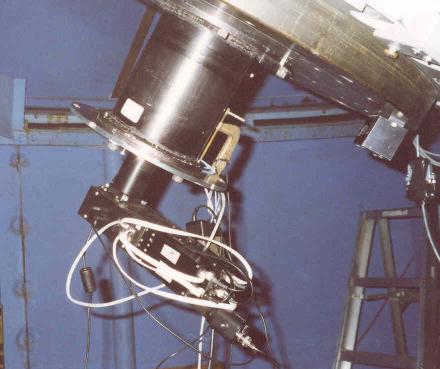

A campaign of site characterization at the Mauna Kea observatory has been organized by joint efforts of several institutes, coordinated by Mark Chun (U. of Hawaii). Its first run took place on October 17-23 2002. The participants of this run are: U. of Nice (SCIDAR and microthermal probes), U. of Hawaii (hosting, two DIMMs from CTIO), CELT (support, AO experiments at Keck), Subaru (AO experiments, two DIMMs), CTIO (MASS). The first 3 nights were mostly lost to weather, the last 4 nights were clear and MASS+SCIDAR+DIMM data were obtained.
MASS was installed at the UH 24" telescope. The free-atmosphere seeing (everything above 0.5km) was generally good and quite steady, between 0.25" and 0.5" most of time. No "bursts" of turbulence at medium altitudes (1-6 km), unlike Tololo and other Chilean sites. The turbulence at 8-16 km was always present but, apparently, it never dominated the overall seeing. During November, MASS will be operated episodically at the 24" by Jake Jackobson (the DIMM observer) to enlagre the statistics and to support the commissioning of the Altair AO system at Gemini-N.
SCIDAR worked at the UH 88" (2.2m) telescope. Qualitatively, it agrees with MASS (e.g. little turbulence at intermediate altitudes); the SCIDAR data are not yet reduced. Sometimes SCIDAR detected multiple layers at high altitudes, some of them moving fast while others almost zero-velocity. The structure of the turbulence profile could change at time scale of tens of minutes.
Microthermometers were installed over the coude roof of the UH 88" telescope at several locations to probe the oncoming turbulence, as well as at the top of the dome slit. Typical values are around 1e-15 m^(-2/3), i.e. too small to degrade the seeing substantially by a layer a few meters thick.
CTIO/UH DIMMs: one unit (DIMM1) was installed at 1.5m above ground near the 24" telescope (to compare with MASS), another (DIMM2) on the coude roof of the UH88. It seems that DIMM2 gives systematically better seeing, this difference is sometimes VERY significant (see below). Both DIMMs show seeing worse than MASS "free-atmosphere" seeing. This confirms the strong role of the ground layer at MK. Mesaurements at 1.5m above ground, as those done so far at MK, apparently do not reflect the site quality. The idea to put a future facility seing monitor at the coude roof of UH88 seems to emerge. As for other potential sites like 13N, a DIMM tower is in planning.
SUBARU DIMMs: two DIMMs of
original design (10-cm lenses, 50-cm baseline, two CCDs per DIMM) were
operated during this mission, one of them aside DIMM1. The data for
inter-comparison were obtained.
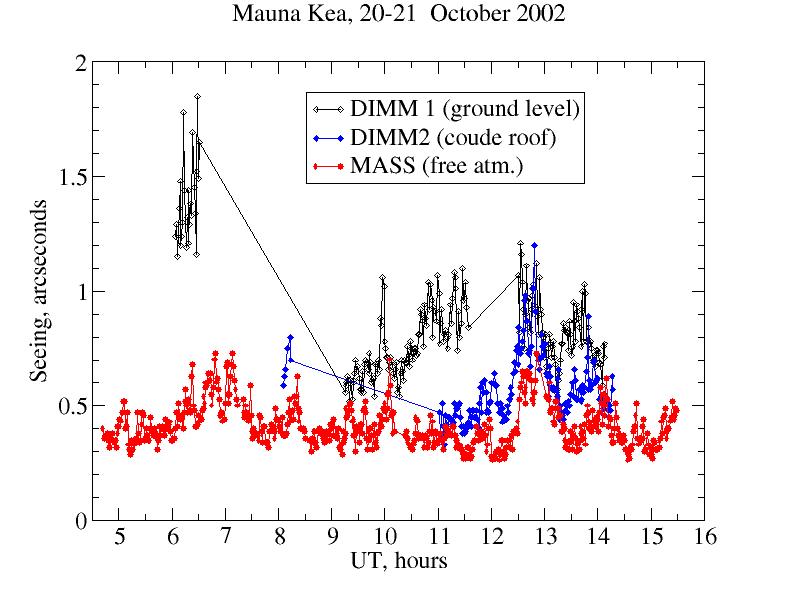
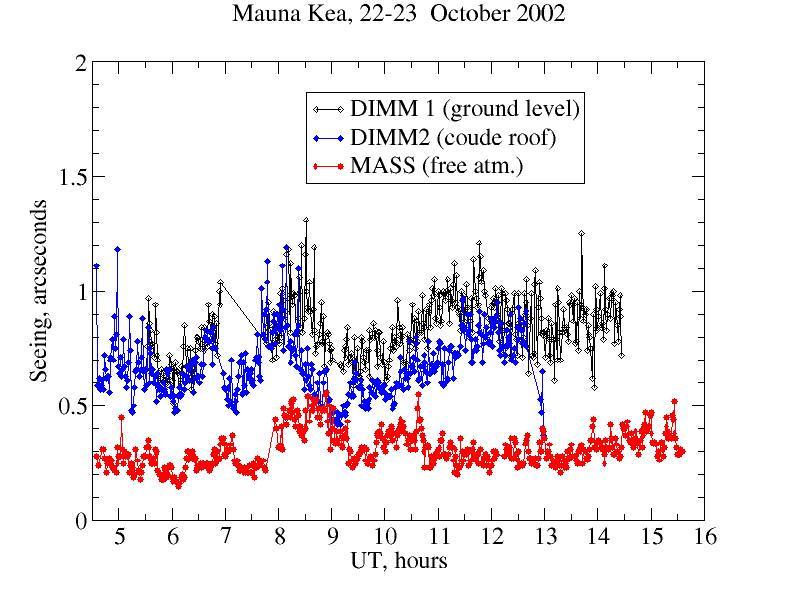
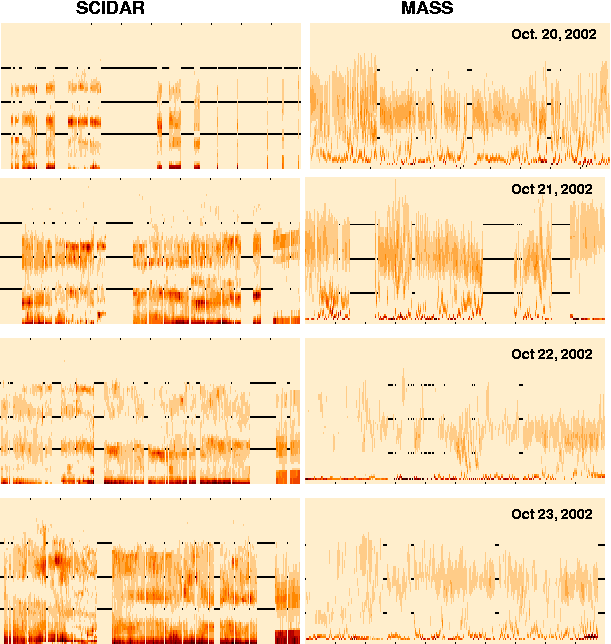
The picture shows half-tone profiles for the whole data set of October 2002 (4 nights). MASS restoration with floating layers is plotted. Report on detailed MASS-SCIDAR comparison (draft): PDF, 1.68M
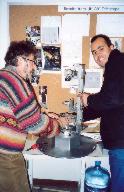 |
 |
 |
 |
 |
 |